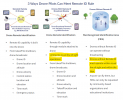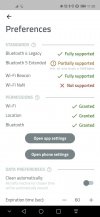You might say a couple on the remote ID board, T Mobile or Verizon (the worst, they lock every bootloader on every phone on their network so it can't be rooted or modded because it might hurt their network somehow) have had some optimism over how all of this was going to work out. Remember they were looking at the network remote ID on the most reliable cell networks out in the boondocks to track every flight. Of course that fell through, figure the rest of it would too. FAA probably don't have any idea I'm guessing.
Be funny if it all went in the trash or at least the drawing board. Most likely not very many people were going to have access to aeroscope either along with the limited manpower.












